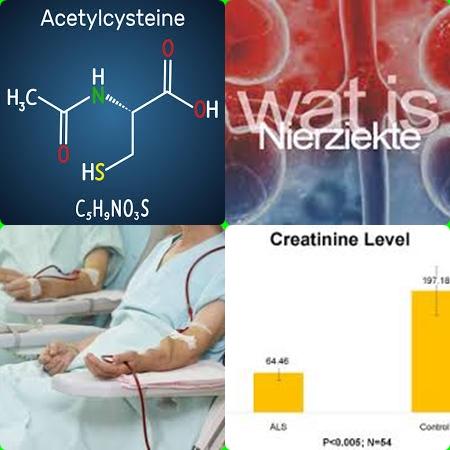
Objectives:
N-acetylcysteine (NAC) is an antioxidant that can regenerate glutathione and is primarily used for acetaminophen overdose. NAC has been tested and used for preventing iatrogenic acute kidney injury or slowing the progression of chronic kidney disease, with mixed results. Therefore, this review article has been conducted.
Has NAC administration a positive effect on the serum creatinine level and the serum cystatin C level?
Study design:
This review article included 6 studies (4 studies were before/after single-arm prospective trials and 2 were parallel randomized controlled trials, comparing NAC against placebo) with a total of 199 participants.
Overall, these studies are small, with a median sample size of 30 (range: 10-60).
The proportion of men ranged from 48% to 83%.
The mean patient age ranged from 33 to 71 years.
The follow-up periods were mostly short.
There was no evidence of publication bias both by visual examination or the Egger test for the analysis of NAC and cystatin C.
Results and conclusions:
The investigators found there was a small but significant decrease in serum creatinine after n-acetylcysteine (NAC) administration overall [WMD = -2.80 μmol/L, 95% CI = -5.6 to 0.0, p = 0.05].
This was greater with non-Jaffe methods [WMD = -3.24 μmol/L, 95% CI = -6.29 to -0.28, p = 0.04] than Jaffe [WMD = -0.51 μmol/L, 95% CI = -7.56 to 6.53, p = 0.89] and in particular with intravenous [WMD = -31.10 μmol/L, 95% CI = -58.37 to -3.83, p = 0.03] compared with oral NAC [WMD = -2.5 μmol/L, 95% CI = -5.32 to 0.32, p = 0.08].
The investigators found there was no change in cystatin C after n-acetylcysteine (NAC) administration [WMD = -0.84 μmol/L, 95% CI = -3.14 to 1.47, p = 0.48, I2 = 0%, p = 0.99].
The investigators concluded there is a small but significant decrease in serum creatinine with n-acetylcysteine (NAC) administration but not in cystatin C. This effect seems to be higher when creatinine is measured with the enzymatic assay (non-Jaffe method) and with intravenous n-acetylcysteine administration.
Original title:
A Systematic Review of the Effect of N-Acetylcysteine on Serum Creatinine and Cystatin C Measurements by Huang JW, Lahey B, […], Hiremath S.
Link:
https://www.ncbi.nlm.nih.gov/pmc/articles/PMC7879108/
Additional information of El Mondo:
Find here more information/studies about review article/significant, n-acetylcysteine and kidney diseases.
The Jaffe and enzymatic methods (non-Jaffe methods) are the 2 most common methods for measuring serum creatinine. The Jaffe method is less expensive than the enzymatic method but is also more susceptible to interferences.
Intravenous therapy (abbreviated as IV therapy) is a medical technique that delivers fluids, medications and nutrition directly into a person's vein.